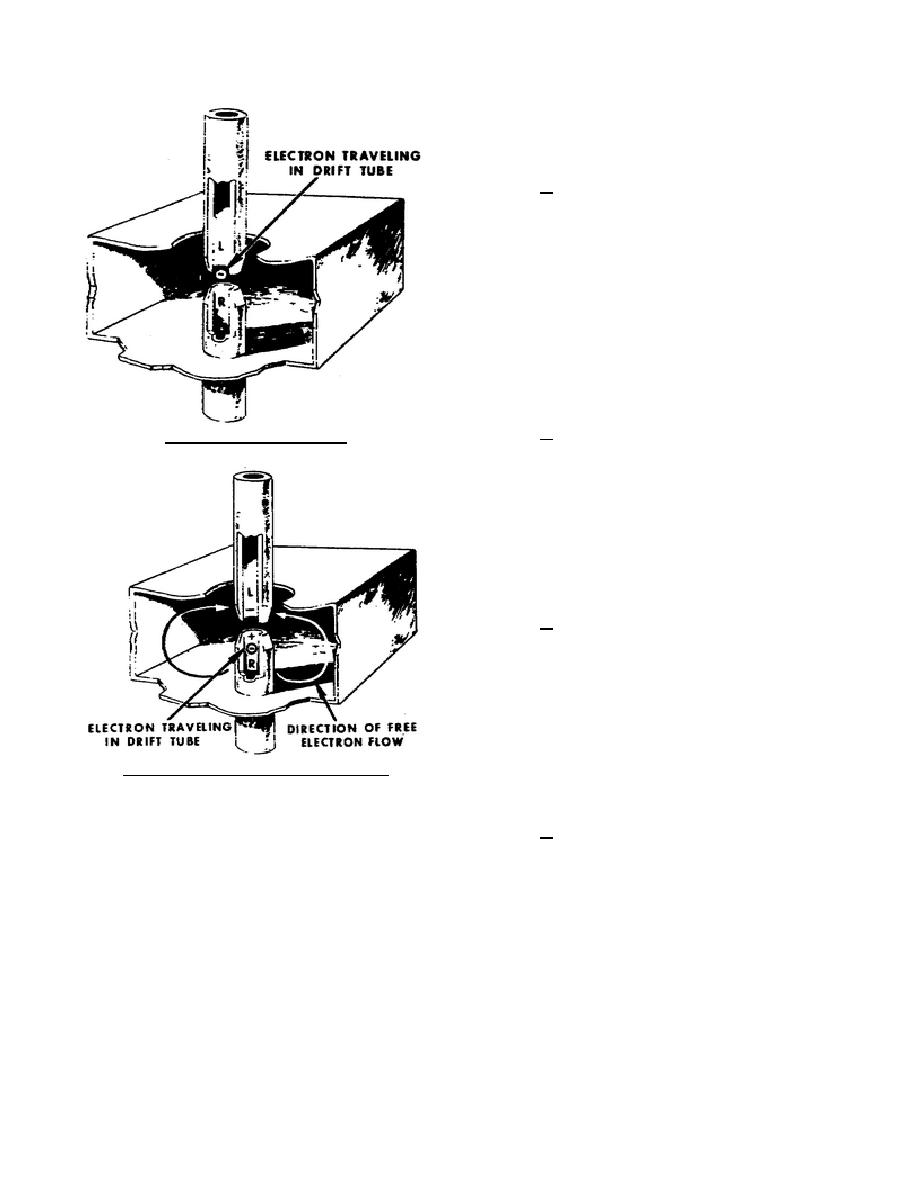
the traveling electron is at tip R, the free electrons
redistribute themselves along the indicated paths
toward tip L.
b. In reality, instead of a single electron, a
"bunch" of electrons passes the gap at one time. The
bunch occurs periodically. Each electron bunch that
passes the gap causes a large number of free
electrons to move within the cavity, as in (1) through
(3) above. The electron movement within the cavity
causes a large alternating potential difference
between the drift tube tips. The alternating potential
difference, in turn, causes oscillating electric and
magnetic fields within the cavity. Repeated electron
bunches passing the drift tube gap sustain the
oscillations in the cavity.
c. The klystron's operation depends upon
Figure 43. Electron in gap.
dc energy, more than it does ac energy, to excite and
sustain the cavity oscillations. The dc electron beam
supplies some energy to each cavity surrounding the
drift tube. Therefore, the beam's net energy levels
decreases as it travels from the electron gun to the
collector.
1-43.
FUNCTION OF THE COLLECTOR
a. The electron beam gives up some of its
energy to sustain oscillation in the klystron's RF
section. But the balance of its energy is carried
through to the collector. The collector operates at
ground potential; however, it may be a 100 kv or
more positive with respect to the cathode. The
collector-to-cathode potential enables the collector
to gather the electrons and pass them out of the
Figure 44. Electron passes through gap.
klystron to an external circuit that leads to a beam
power supply.
(2) Figure 43 shows the time instant
when the electron is in the gap. At this time, the
b. A large amount of kinetic energy still
traveling electron repels the free electrons in both
remains with the electrons as they reach the
tips equally. Therefore, the net current flow is zero
collector. These electrons strike the collector with
and there is zero potential difference between the
great impact and cause the collector to become hot.
tips.
To get rid of accumulated collector heat, air or a
liquid coolant, such as water, is used to cool the
(3) Figure 44 shows the time instant just
collector. Some high power klystrons may use both
after the electron has passed beyond the gap on the
air and liquid coolants. The liquid coolants do not
side of tip R. The electron repels the accumulated
affect the operation of the klystron because the
free electrons in tip R. You'll recall that tip R
collector operates at ground potential.
received some free electrons from tip L. Because
344 L1
42



 Previous Page
Previous Page
